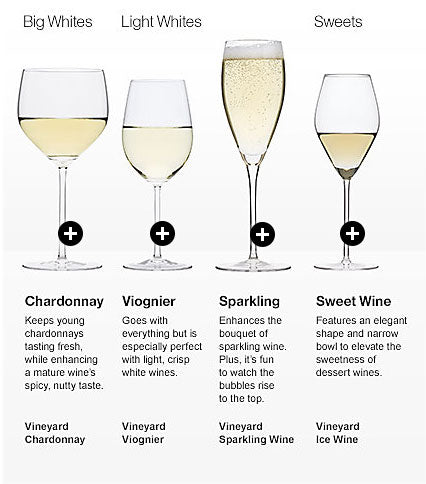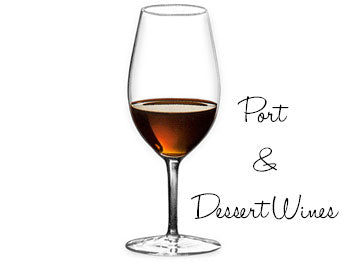Wine glasses and varied choices available in the market today is extremely confusing. This is why we thought it would be nice to have a quick guide to understand the basics of Wine Glasses. Regardless if you have been enjoying Wine for decades, or if you are a beginner we are hoping to de-mystify the basics of the Wine Glass. Before we start, lets first understand and agree on the different structural components of a Wine Glass. Most Wine glasses consist of the Base, the Stem and the Bowl. Yes, there ARE stem-less wine glasses available today, however let’s skip that for a moment as we will get to that later.

Base:
Naturally, this is the part of the Glass that is used to keep it upright.
Stem:
This is the part of the Glass that is used to hold the Glass. Most of us very often will hold the Glass by the Bowl, however the stem was designed so the Wine Glass can be held without affecting the temperature of the Bowl, and also to not smudge the Bowl so that you can enjoy the beauty of the Wine that is being held in the Bowl.
Bowl:
The is the most important part of the Glass, as it holds the Wine and the SHAPE and SIZE are designed to be specific to the type of Wine that is being enjoyed. The full and best experience of Wine arises from a combination of both the Aroma as well as the Flavour of the Wine. Therefore the changes in the shape of the Bowl are made in order to properly impact the aroma to our Nose, and flavours to our Tongue. Also, if you notice the tip, or the rim of the Glass are very commonly tapered towards the top. This is done so that the aroma can be concentrated at the top, and also to allow you to swirl the glass without it spilling out the top.

Stem-less Glasses which have gotten quite popular in the recent past, basically preserve the shape of the bowl for standard red wines, but remove the stem for ease of use. They are also easier to maintain as the fragile stem is not a concern anymore. There will obviously be an impact to the full experience of the wine, however that is a choice consumers are making when weighing option of design and ease of use.
Red Wines

Red Wine Glasses generally have wider bowls. This is done so that the Wine can breathe. The breathing of wine refers to the process where the Wine can come in contact with Oxygen and release the complex aromas and flavours. Therefore the wider the bowl, the more oxygen can do it’s wonderful work. Additionally, a wider bowl provides a larger surface area to allow the Ethanol to evaporate. A wider opening also facilitates the wines flow properly to the sides and back of the tongue to fully enjoy the flavours of the Wine. Generally, these glasses are designed so that the wine can be poured to a bit less than half the glass. This allows for the best combination of ethanol evaporation, the release of the aromas and the distance from the nose to the top of the Wine. Wine Glasses will also slightly vary between the different types of Wine. This is done so as to properly balance the release of the Tannins, along the alcohol content of the Wine. Cabernet Sauvignon, Bordeoux, Sangiovese, Merlot and Grenache: These are all full bodied, high tannin wines with high acidity. The bowls for these wines will usually be the largest and tallest. Syrah, Shiraz, Malbec, Zinfandel: These are also full bodies wine with ample tannins. You will notice that the glasses for these wines are very similar to the ones above, but the bowl may be slightly shorter and narrower. Pinot Noir: This is a lighter and more delicate wine, so the design of these Glasses is very similar to both above but the bowl may be a bit shorter.
White Wines

White Wines are generally served in smaller bowls. This is done in order to preserve the light aromas, and in order to maintain a cooler temperature. Due to the proximity of the wine to the nose, these glasses are designed to deliver more aromas at cooler temperatures. This is also the reason that you will notice a more of a “U” shape to White Wine Glasses. Going back to how tastes are delivered to our tongues, the newer and fresher wines are served in glasses that have a slightly larger opening in order to properly deliver the sweetness to the tip and sides of the tongue. More mature wines require the flavor to be delivered to the sides and back of the tongue hence the Glass may be taller and more straight. Chardonnay: These Glasses are very similar to Pinot Noir Red Wine glasses as the Wine is very similar in properties. It may be a bit smaller. Sauvignon Blanc: These glasses have a narrower bowl in order to preserve the aroma, and also prevent over oxygenation so as to keep the wine fresher for longer. Riesling: These glasses are probably the tallest and narrowest in the bunch. This is done to fully release and preserve the fruity aromas of the wine, and keep the wine the coolest possible in order to fully enjoy the Riesling experience.
Champagne and Sparkling Wines
Both of these wines have bubbles of carbon dioxide and provide a luxurious and velvety feel on the tongue. The Glasses for these Wines are designed to preserve the aroma as well as the bubbles for the longest possible time whilst keeping it chilled so that you enjoy the experience for the longest possible time. Some mature Champagnes that have a fuller body can be enjoyed in a slighter wider bowl close to a Riesling.
Port and Dessert Wines

These glasses are usually the smallest and most slender of the different types of Wines. This is done in order to concentrate the flavours of the fruit and spices rather than the flavours of the tannins or alcohol. Dessert wines may also have a slightly tapered rim to allow you to swirl the wine and keep the balance between wine and air. They also allow focus on the acidity of the wine in order to keep the balance between the acidity and sweetness.
At the end of day, if you really enjoy your Wines, and wish to fully experience the wine as the Winery intended it may be worth procuring a different type of Glass for the specific Wine. However, if you do not drink wine very often it is advised to simply pick up some Red Wine, White Wine and Champagne glasses based on a style that looks good to you, and then add more styles to your collection as your appreciation for Glasses increases.
